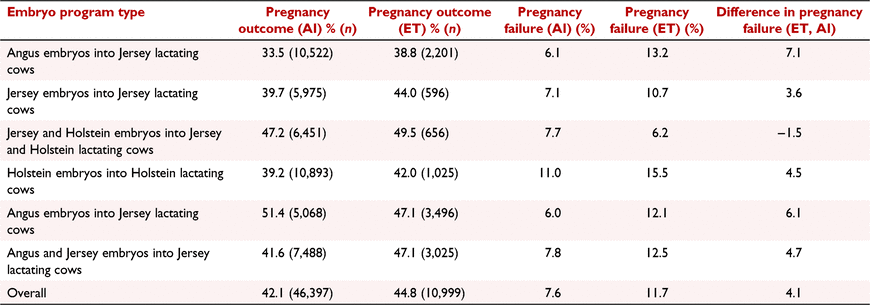13 Is pregnancy failure still a major concern for bovine in vitro-produced embryos?
R. Reis Silva A , D. Demetrio B , C. Walhof C , M. Oliveira B , J. Spricigo A and R. Santos DA Federal University of Goias, EVZ, Goiania, GO, Brazil
B RuAnn Genetics, Riverdale, CA, USA
C Valley Veterinarians Inc, Tulare, CA, USA
D Federal University of Uberlandia, Uberlandia, MG, Brazil
Reproduction, Fertility and Development 35(2) 131-132 https://doi.org/10.1071/RDv35n2Ab13
Published: 5 December 2022
© 2023 The Author(s) (or their employer(s)). Published by CSIRO Publishing on behalf of the IETS
In 2020, 1.5 million embryo transfers (ET) were recorded, and in vitro-produced (IVP) embryos accounted for 76% of all transferable cattle embryos. Despite the increased use of IVP embryos in recent years, there are still concerns about pregnancy failures and its efficiency to produce a live calf. Is pregnancy failure still a major concern for IVP embryos produced in modern culture systems? The objective of this study was to compare the pregnancy outcomes and failures in commercial dairy cows who received artificial insemination (AI) or IVP embryos in 2020 and 2021. Results from six different dairy embryo programs in Tulare County, California, stored at DairyComp herd management software were recorded. Lactating Holstein or Jersey cows over 55 days in milk, from first to fifth lactation were inseminated with Holstein, Jersey, or Angus semen, or received a fresh or frozen embryo seven or eight days after oestrus produced in three different IVP laboratories. The first pregnancy diagnosis was performed 33–40 days after expected oestrus by transrectal ultrasonography, and the number of pregnancies divided by the total number of AI or ET was used to determine pregnancy outcome. The pregnancy was monitored until parturition and pregnancy failure was considered to have occurred when a cow who was pregnant on the first exam did not deliver a live calf. A descriptive analysis was conducted and the results from AI and IVP transfers are shown in Table 1. These data are very heterogeneous, but provide an assessment of the reproductive status of the herd, and pregnancy failure was not a major concern for these IVP programs, as the differences from AI and ET were not high and 88% of the IVP pregnancies resulted in a live calf. The improvement of the IVP systems in the past decade and the use of chemically defined media with the absence of fetal calf serum are likely the main factors contributing to the reduction of pregnancy failures. AI pregnancy outcomes in a specific dairy should always be checked to set up the baseline for embryo pregnancy outcomes and failures before starting or evaluating the results of an IVP program.

|
This research was supported by RuAnn Genetics, Jer-Z-Boyz, Four J Jerseys, and Valley Veterinarians Inc.


